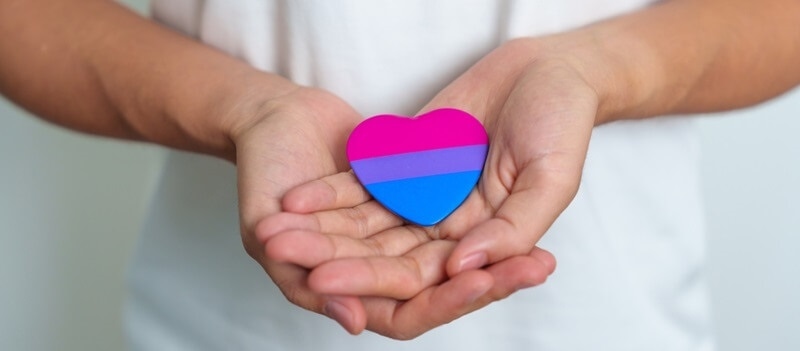Sapphic vs Lesbian Exploring Differences and Connections

The words we use to describe ourselves matter. Within queer spaces, two labels often come up—sapphic and lesbian. At first glance, they may look interchangeable, but they don’t always mean the same thing. Understanding the difference between sapphic and lesbian is important because each term reflects identity, history, and community in a unique way.
This isn’t about ranking one term over the other. It’s about recognizing what sapphic identity and lesbian identity represent, how they connect, and where they differ.
What Does Sapphic Mean? A Historical and Modern Look
The word sapphic traces back to the ancient Greek poet Sappho, who lived on the island of Lesbos more than 2,500 years ago. Sappho wrote about intimacy, longing, and love between women, which is why her name still resonates when talking about same-gender attraction.
In its simplest form, sapphic means anything tied to Sappho or her work. But language evolves, and so has this term. In modern usage, sapphic identity describes women and non-men who are attracted to women and non-men. It is deliberately broad, allowing space for bisexual women, pansexual women, and nonbinary people who are drawn to women but don’t always fit neatly under the lesbian label.
Why People Use Sapphic
Many choose sapphic because it doesn’t box them in. A woman who is primarily interested in women but sometimes attracted to men may feel sapphic fits better than lesbian. Similarly, a nonbinary person in love with women might find sapphic more accurate than lesbian, since the latter is usually gender-specific.
In other words, sapphic relationships are not limited to women with women. They can also include women with nonbinary partners or even relationships where attraction to women is part of a broader spectrum.
That inclusivity is why sapphic has become such a valued umbrella term. It opens the door instead of closing it.
Must Read: LGBTQ Social Acceptance: Shifts and Challenges
What Is the Definition of Lesbian?
The term lesbian also ties back to Sappho, through her birthplace, Lesbos. Unlike sapphic, though, its modern meaning is narrower and more specific.
The Core Meaning
A lesbian is a woman who is romantically or sexually attracted to women. That’s the central definition, and it hasn’t shifted much over time. While sapphic identity allows for a range of attraction patterns, lesbian identity tends to emphasize exclusivity.
Why Lesbian Still Holds Power
For many women, lesbian isn’t just a personal label—it’s a statement of pride. The word is tied to decades of queer visibility, activism, and culture. It carries history and community weight that sapphic, as inclusive as it is, doesn’t always capture.
Lesbian also provides clarity. Where sapphic can feel fluid and open-ended, lesbian is straightforward. It tells people exactly what it means: women who love women.
And while some prefer the flexibility of sapphic, others embrace lesbian specifically because of that sharp, direct definition.
Key Differences: Sapphic vs. Lesbian Inclusivity
When comparing sapphic vs lesbian, the differences come down to inclusivity, scope, and the relationships each label represents.
Inclusivity
- Sapphic: Covers a wide range—women and non-men attracted to women and non-men. It includes bisexuals, pansexuals, queers, and nonbinary people who love women.
- Lesbian: More specific. Focused on women who are exclusively attracted to women.
Identity
- Sapphic identity is flexible, allowing people to hold space for multiple parts of who they are.
- Lesbian identity is precise, affirming exclusivity and providing a sense of belonging in a clearly defined community.
Relationships
- Sapphic relationships may include women with women, women with nonbinary people, or even nonbinary people with each other, so long as attraction to women is present.
- Lesbian relationships are generally defined as relationships between two women
Why It Matters
Understanding the difference between sapphic and lesbian isn’t about drawing strict lines—it’s about respecting how people identify. Some need the openness of sapphic. Others need the certainty of lesbian. Both terms create space for queer people, just in different ways.
You may also like: Quick Move-Ins and the Lesbian Relationship Timeline
Why Someone Might Choose One Label Over the Other

Identity is personal. Some people gravitate toward sapphic, while others feel more at home with lesbian. Neither choice is wrong.
- Choosing sapphic: Works for those who want inclusivity. A bisexual woman might feel sapphic reflects her without erasing her attraction to men. A nonbinary person might choose sapphic because lesbian doesn’t fully capture their gender identity.
- Choosing lesbian: Resonates with women who exclusively love women. It also connects them to the history and community that comes with being lesbian.
Some even use both, depending on the situation. For example, they might identify as sapphic in broader queer spaces but describe themselves as lesbian when speaking specifically about women-loving-women culture.
Clearing Up Common Misconceptions
Because the terms overlap, confusion is common. Here are a few myths worth addressing:
- “Sapphic and lesbian are identical.”
Not exactly. They overlap but sapphic is broader, while lesbian is more specific. - “Sapphic is just a new label.”
The word has ancient roots. Its modern usage may be new, but the connection to Sappho keeps it historically grounded. - “Lesbian works for everyone attracted to women.”
Not true. Lesbian usually applies only to women, which is why nonbinary people and some bisexual women prefer sapphic.
Sapphic vs Lesbian in Culture and Media
Language also shapes how stories are told.
- Sapphic representation: You’ll often see books, films, and playlists labeled “sapphic.” This signals inclusivity, it could be about women and nonbinary people loving women, not just lesbians.
- Lesbian representation: Usually sharper in focus, centering on women-loving-women stories with a clear identity marker.
Both forms of representation matter. Sapphic ensures no one feels left out, while lesbian ensures visibility for women who love women exclusively.
More to Explore: The Evolution of Queer Culture: Trends & Shifts
Final Thoughts: Sapphic vs Lesbian
The debate around sapphic vs lesbian isn’t about which word is better. It’s about recognizing their differences and the roles they play in identity.
- Sapphic: Inclusive, flexible, and broad—covering a wide spectrum of attraction to women and non-men. Perfect for people who don’t want to be restricted by one definition.
- Lesbian: Specific, proud, and historic—focused on women who love women and tied to decades of visibility and activism.
Knowing the difference between sapphic and lesbian helps us respect how people identify, whether they lean toward the openness of sapphic identity or the clarity of lesbian identity.
And when it comes to relationships, both sapphic and lesbian connections deserve recognition. Sapphic relationships highlight inclusivity, while lesbian relationships reflect a direct expression of women loving women. Together, they show the richness and diversity of queer love.
At the end of the day, identity is about truth and belonging. Whether someone chooses sapphic, lesbian, or both, the key is that the label fits them—not anyone else.























